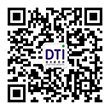Tattoo pigment EU REACH testing process
Date:2025-07-22 10:51:30 Classification
:【question】 Visits:
The complete process and key points of REACH testing for tattoo pigments exported to the EU are summarized in combination with EU regulatory requirements and practical guidelines for testing agencies:
I. Core testing process
1. Demand confirmation and agency selection
- Confirm whether the tattoo pigment contains substances restricted by EU REACH Annex XVII (such as polycyclic aromatic hydrocarbons, heavy metals, and specific azo dyes).
- Select a testing agency with EU accreditation qualifications (such as Dezewei Testing).
2. Submit application and prepare samples
- Fill in the application form: provide a pigment composition table (including CAS number), production process, and instructions for use.
- Send samples:
- 2-3 individually packaged pigment samples (≥50g each) are required;
- If it contains multiple components (such as pigment + solvent), they must be marked and submitted separately.
3. Laboratory testing stage
- Mandatory inspection items:
| Inspection category
| Heavy metals
| Polycyclic aromatic hydrocarbons (PAHs)
| Specific azo dyes
| SVHC substances of high concern
- Cycle: Routine testing takes 5-7 working days, and complex components or urgent needs may be extended.
4. Report generation and compliance rectification
- The testing agency issues a REACH test report in Chinese and English, including:
- Sample information, test methods, limit standards, and result comparison;
- If it fails: mark the excessive substances and recommend alternatives (such as replacing harmless pigments).
2. Key operation suggestions
1. Pre-examination of materials to reduce risks
- Require raw material suppliers to provide REACH compliance statements and third-party test reports;
- Avoid using formulas containing phthalates (plasticizers) and hexavalent chromium (stabilizers).
2. Key points for document preparation
- Must provide:
- Color MSDS safety data sheet (including first aid measures, leakage treatment);
- Production process flow chart and quality control records;
- Packaging identification diagram (must include ingredient percentage).
3. Cost and cycle optimization
- Basic package fee: ¥1000~2000 yuan (single color/simple ingredient);
- Expedited service: pay an additional 30%~50% fee, which can be shortened to 3 working days.
III. Violation risk warning
1. EU market supervision measures
- Exceeding products will be forced to be removed from the shelves/destroyed and face a fine of 4% of sales;
- Included in the RAPEX early warning system, resulting in EU-wide notification.
2. Special requirements for tattoo pigments
- Products that come into direct contact with the human body need to undergo additional skin sensitization testing (EN 71-10/11 standard);
- Organic solvent components need to provide data on volatile organic compounds (VOCs) release.
IV. Successful case reference
- Correction plan for a certain color pigment company:
1. Cadmium exceeding the standard (0.03%) was detected → replaced with iron oxide pigments;
2. Supplementary SVHC substance screening (two new tests);
3. After re-inspection, the ECHA compliance certificate was obtained, and the export volume increased by 40%.




 Shen Gongwang Security: 44030602006947
Shen Gongwang Security: 44030602006947